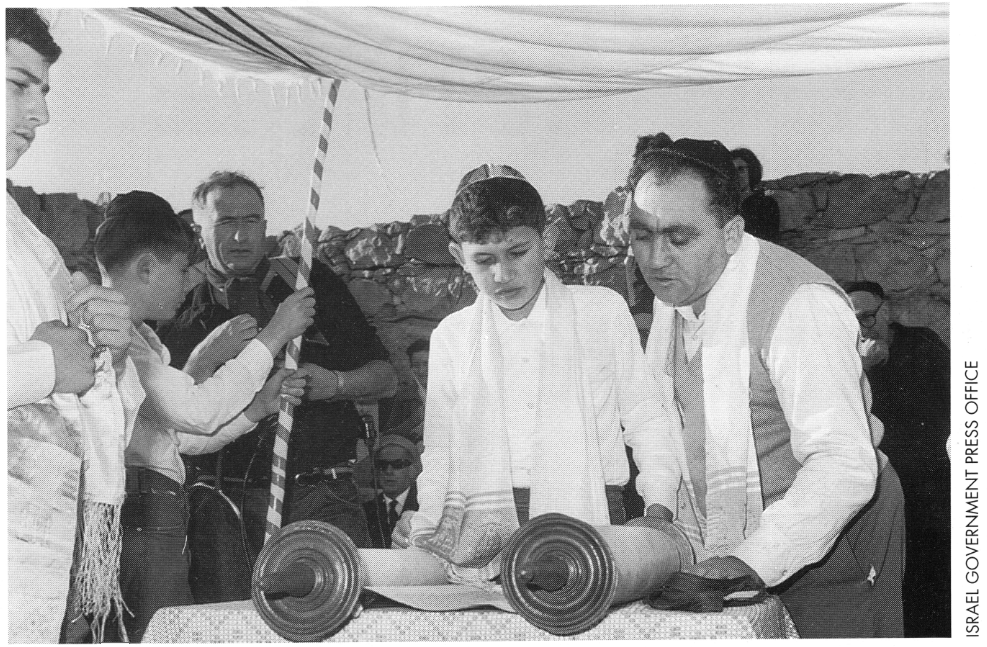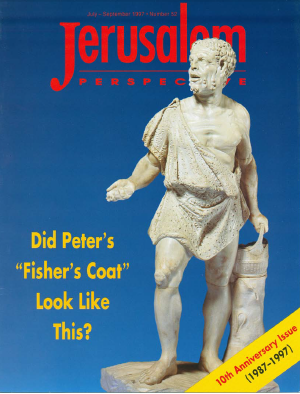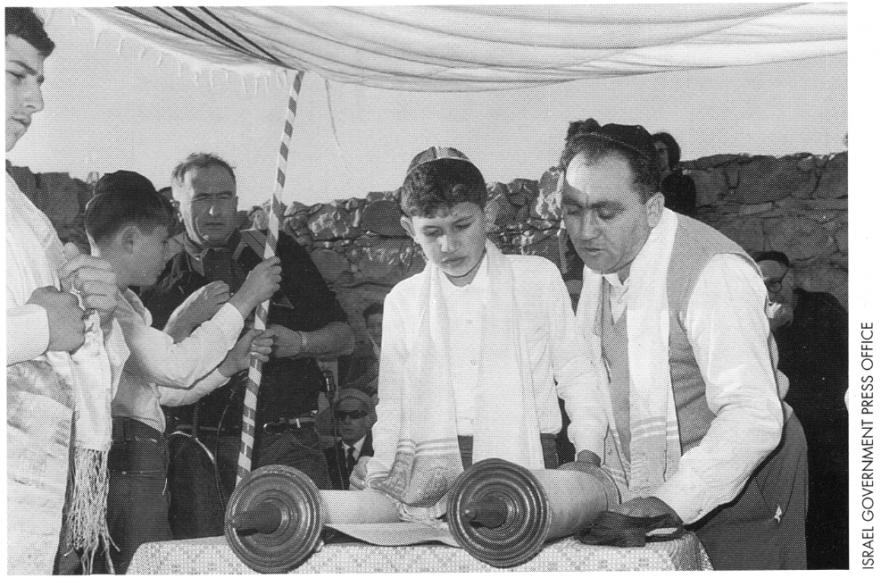Every Saturday morning in synagogues throughout the world the Torah is read aloud. Following ancient practice, seven men in turn read the weekly Torah portion. However, Professors Shmuel and Chana Safrai have recently discovered that a different custom prevailed until the destruction of the Temple in 70 A.D.
Rabbinic sources inform us that on the Sabbath the Torah was read aloud in the synagogue by seven persons, a custom that has continued until this day.[7] Scholars have assumed the custom was the same in the time of Jesus.[8]

Premium Members and Friends of JP must be signed in to view this content.
If you are not a Premium Member or Friend, please consider registering. Prices start at $5/month if paid annually, with other options for monthly and quarterly and more: Sign Up For Premium

- [1] According to the Safrais, all traditions dating to the Second Temple period agree there was a single reader of the weekly Torah portion: Mishnah, Sotah 7:7-8; Mishnah, Yoma 7:1; Antiq. 4:209; Eusebius, Praeparatio Evangelica 8:7, 13 (quoting fragments of Philo’s Hypothetica); Philo, Every Good Man Is Free 81-82; cf. The Contemplative Life 30-31; Luke 4:16-20. See also, Shmuel Safrai, "Gathering in the Synagogues on Festivals, Sabbaths and Weekdays," British Archaeological Reports, International Series 499 (1989), 7-15. In Praeparatio Evangelica 8:7, 13, Philo tells of the custom of the people "to gather together on Sabbath days in one place, and while sitting together in the sanctity of the place...to listen to the reading of the Torah...and one of those present, a cohen [man of priestly descent], or an elder, reads the holy commandments and interprets them." In Every Good Man Is Free 81-82, speaking of the Essenes, Philo states, "...to the holy places, that are called synagogues...one of the men takes out the holy books and reads aloud from them, and another knowledgeable man stands beside him explaining the things that need explanation." Mishnah, Megillah 4:1 is additional support for the contention that at first there was one, not seven, Torah readers. This tannaic halachah states: "He who reads the megillah [scroll; i.e., the Scroll of Esther] may stand or sit. If one reads it, or if two read it, they [the congregation] have fulfilled their obligation." The context deals with the reading of the Torah, not Esther. As J. N. Epstein has already shown (Introduction to the Text of the Mishnah, 2nd ed. [Jerusalem: The Magnes Press, and Tel Aviv: Dvir, 1964], 1:491-492 [Hebrew]), the word "megillah" is a latter addition from a time when it was no longer permitted to sit while reading the Torah. As the passage shows, in this early period there may sometimes have been two Torah readers. The Safrais suppose that, at times, the second reader may have been a woman. ↩
- [2] The article, הכל עולין למנין שבעה (Hakol Olin Leminyan Shiv'ah; All Are Permitted to Be One of the Seven Sabbath Torah Readers), will be published later this year in Issue 66.2 of the Hebrew-language journal Tarbiz (ISSN 0334-3650; P.O. Box 7695, 91076 Jerusalem, Israel). ↩
- [3] Indicated by the words "he stood up to read" in Luke 4:16 (see Shmuel Safrai, "Naming John the Baptist," Jerusalem Perspective 20 [May 1989]: 2). ↩
- [4] In Jesus’ time the readings from the Prophets that accompanied the Torah portions had not yet been fixed. Apparently, the Torah reader had a great deal of liberty in choosing the accompanying passage from the Prophets (Shmuel Safrai, "Naming John the Baptist": 2). Jesus read Isa. 61:1-2a, inserting part of Isa. 58:6. ↩
- [5] Indicated by the words "he sat down" in Luke 4:20. A teacher always assumed that posture before beginning to teach. The words "the eyes of all in the synagogue were fixed on him" also indicate that Jesus preached a sermon. After Jesus read the Scriptures and seated himself, the congregation waited expectantly for him to begin his sermon. ↩
- [6] In Jesus’ day the Saturday morning service was the only service of the week. This can be seen clearly from, for instance, Acts 13:14, 42, 44; Acts 17:1-2; and Acts 18:4. The Book of Acts is a mid-first-century A.D. source. ↩
- [7] Tosefta, Megillah 3:11; Babylonian Talmud, Megillah 23a. Notice that both sources transmit the tannaic halachah that women can be included among the seven Torah readers. ↩
- [8] Chana and Shmuel Safrai also had made this assumption (cf. Shmuel Safrai, “Naming John the Baptist” JP 20 [May 1989]: 1-2). ↩



